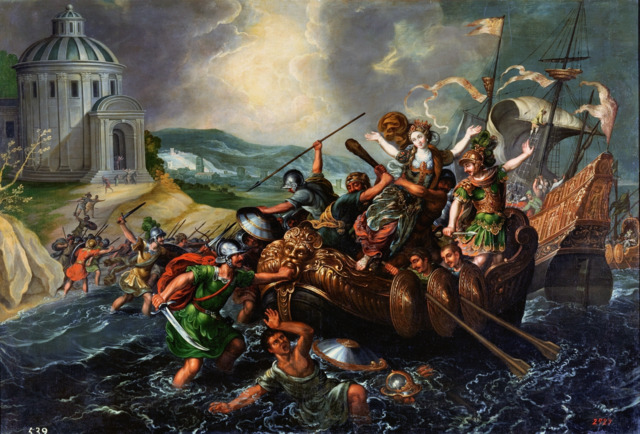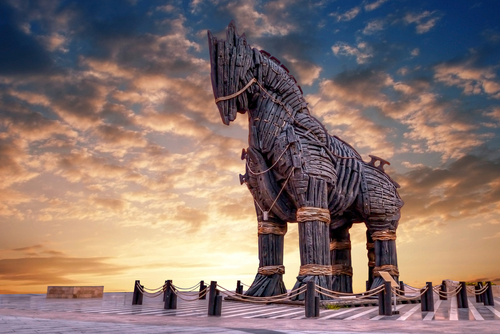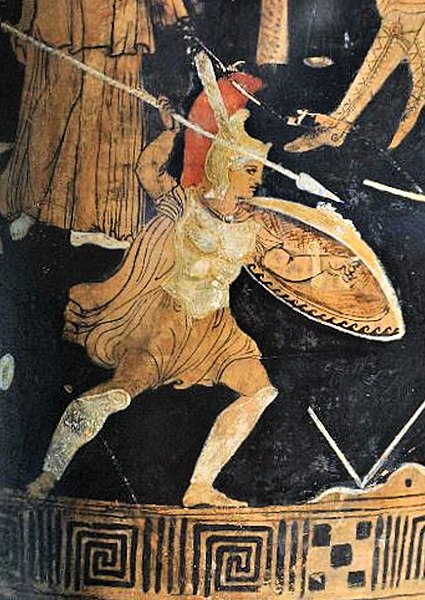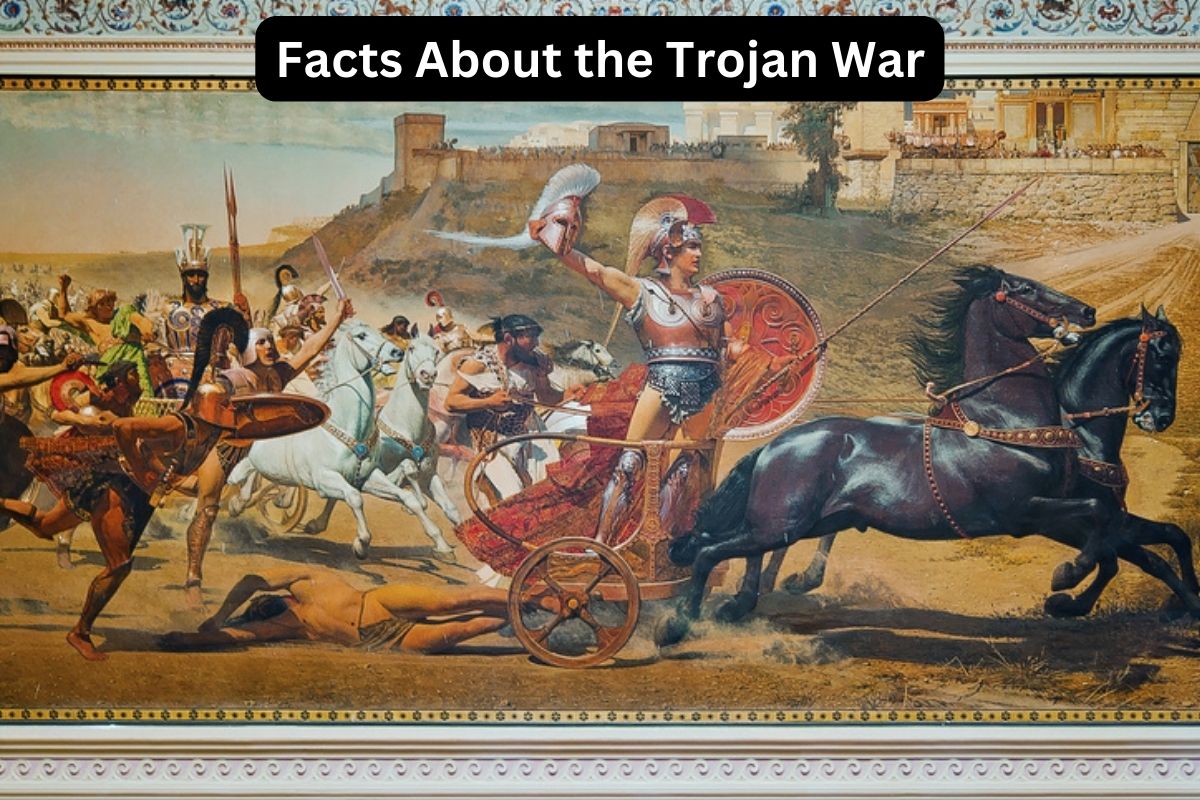The Trojan War, a legendary conflict of ancient times, is shrouded in myth and history. Believed to have taken place around the 12th or 13th century BCE, it was fought between the city of Troy and an alliance of Greek city-states.
The war was triggered by the abduction of Helen, the wife of Menelaus, by Prince Paris of Troy. Lasting for about ten years, the war involved heroic warriors, strategic battles, and divine interventions.
It culminated in the fall of Troy and had profound consequences for both sides.
The tales of the Trojan War, immortalized in epic poems such as the Iliad, continue to captivate and influence Western literature and culture to this day.
Trojan War Facts
1. Took place around the 12th or 13th century BCE
The Trojan War is estimated to have taken place around the 12th or 13th century BCE.
Also Read: Trojan War Timeline
The exact dates are uncertain since the war is primarily known through ancient mythology and historical accounts, rather than precise historical records.
The events of the war were eventually recorded by ancient Greek poets and historians.
2. Fought between Troy and an alliance of Greek city-states
The war was fought between the city of Troy (also known as Ilium) and an alliance of Greek city-states.
Also Read: Facts About the Trojan Horse
The most prominent leader of the Greek alliance was King Agamemnon of Mycenae, who commanded a fleet of ships and an army of warriors from various Greek regions.

3. Caused by the abduction of Helen by Paris
The immediate cause of the Trojan War was the abduction of Helen, the wife of Menelaus, by Paris, a prince of Troy.
According to legend, Paris was asked to judge a beauty contest between three goddesses—Aphrodite, Athena, and Hera. He chose Aphrodite, who promised him the most beautiful woman in the world, Helen.
Paris then traveled to Sparta, where he took Helen back with him to Troy, igniting the conflict between the Greeks and Trojans. This event is often referred to as the “Judgment of Paris.”
4. Lasted approximately ten years
The Trojan War lasted for approximately ten years. According to ancient Greek mythology and accounts, the conflict was marked by a series of battles, sieges, and skirmishes between the Greek forces and the defenders of Troy.
The war’s duration is famously depicted in Homer’s epic poem, the Iliad, which focuses on a relatively short period during the final year of the war.
5. Trojan horse was a famous tactic used by the Greeks
The Trojan horse is one of the most well-known symbols associated with the Trojan War. As the war seemed to reach a stalemate, the Greeks devised a plan to infiltrate the heavily fortified city of Troy.
They built a giant wooden horse and left it outside the city’s gates as a supposed offering to the gods. The Trojans, believing the horse to be a token of victory or a religious offering, brought it inside the city walls.
Unbeknownst to them, Greek soldiers were concealed inside the hollow structure. Under cover of darkness, the soldiers emerged and opened the gates of Troy, allowing the Greek army to breach the city and emerge victorious.

6. Achilles, the greatest Greek warrior, played a prominent role
Achilles, a legendary Greek hero, played a prominent role in the Trojan War. Known for his exceptional skills in combat and his invulnerability, except for his heel (hence the term “Achilles’ heel”), Achilles was a central figure in the Greek army.
He was renowned for his feats of valor and ferocity on the battlefield. However, his pride and anger led to conflicts with other Greek leaders, such as Agamemnon.
Achilles’ most significant moment came when he killed the Trojan hero Hector in single combat, avenging the death of his close friend Patroclus.
Nevertheless, Achilles himself met his end when Paris shot him with a poisoned arrow, targeting his vulnerable heel. This event is also a focal point in Homer’s Iliad and has become one of the most enduring stories of the Trojan War.
7. Other notable figures include Hector, Odysseus, and Ajax
The Trojan War involved numerous notable heroes and figures on both sides. Hector, the eldest son of King Priam of Troy, stood out as the greatest Trojan warrior.
He was known for his courage, loyalty, and skill in battle. Hector’s clashes with Achilles are among the most memorable encounters in the Iliad. Odysseus, King of Ithaca, was a Greek strategist renowned for his cunning and intelligence.
He played a crucial role in devising the plan of the Trojan horse. Ajax, also known as Ajax the Great, was a formidable Greek warrior known for his immense strength and bravery. His rivalry with Odysseus and his tragic fate after the war are depicted in various Greek myths.

8. Troy was destroyed, and its inhabitants were killed or enslaved
The Trojan War had significant consequences for both sides. After a long and grueling conflict, Troy was eventually conquered and destroyed by the Greeks.
The city was razed, its buildings were demolished, and its treasures were plundered. Many of the Trojan inhabitants were killed or enslaved. The war’s aftermath was also marked by the Greek heroes’ arduous journeys back to their homelands.
These perilous voyages, depicted in Homer’s Odyssey, were filled with trials, encounters with mythical creatures, and divine interventions.
9. Archaeological evidence supports the existence of Troy
The historicity of the Trojan War has been a subject of debate among scholars.
While the war is primarily known through mythology and ancient texts, archaeological evidence supports the existence of the city of Troy and suggests that conflicts occurred during the late Bronze Age.
Excavations at the site of Hisarlik, believed to be the location of ancient Troy, have revealed layers of destruction and remnants of warfare consistent with accounts of the war.
10. The war’s stories influenced Western literature, art, and culture
The Trojan War and its legendary heroes have had a lasting impact on Western literature, art, and culture. The epic poems of Homer, the Iliad, and the Odyssey, have served as foundational texts in Western literature.
These works have inspired countless adaptations, retellings, and artistic representations over the centuries.
The characters and themes of the Trojan War continue to resonate in contemporary storytelling, serving as a source of inspiration for authors, playwrights, and filmmakers. The war’s enduring legacy showcases the power of myth and storytelling in shaping cultural narratives.
